
The Vibrant Heart of Singapore: Chinatown
Discover the vibrant heart of Singapore in Chinatown, where heritage, culture, and modernity converge in a bustling neighborhood full of rich history and delectable cuisine.
Chinatown in Singapore is a bustling neighborhood that brings together Chinese culture, history, and modernity. This vibrant district is a must-visit for tourists seeking a unique blend of old and new. Walking through the streets, you will find traditional shophouses, temples, and markets, all standing alongside modern buildings and trendy cafes. One of the main attractions in Chinatown is the Buddha Tooth Relic Temple, a magnificent structure that houses a sacred Buddhist relic. The temple's intricate architecture and serene ambiance offer a peaceful retreat from the busy streets. Another notable site is the Sri Mariamman Temple, Singapore's oldest Hindu temple, which showcases the rich cultural diversity of the area. Chinatown is also a food lover's paradise. The Chinatown Food Street is packed with stalls offering a variety of local delicacies, from Hainanese chicken rice to char kway teow. For a more immersive experience, visit the Chinatown Complex Food Centre, where you can try authentic hawker fare at affordable prices. Shopping enthusiasts will enjoy the Chinatown Street Market, where you can find everything from traditional Chinese medicine to souvenirs and antiques. The market is a great place to pick up unique gifts and experience the local culture. For those interested in history, the Chinatown Heritage Centre provides an insightful look into the lives of Chinatown's early settlers. Chinatown is well-connected by public transport, making it easy to explore the rest of Singapore. Whether you're here for the food, culture, or shopping, Chinatown offers an enriching experience that captures the essence of Singapore's multicultural heritage.
Local tips in Chinatown
- Visit the Buddha Tooth Relic Temple early in the morning to avoid crowds and enjoy a peaceful atmosphere.
- Wear comfortable shoes as you will be walking a lot through the narrow streets and markets.
- Bring cash for small purchases at street markets and food stalls, as not all vendors accept credit cards.
- Don't miss the Chinatown Heritage Centre for a deeper understanding of the area's history and culture.
- Try the local hawker food at Chinatown Complex Food Centre for an authentic Singaporean culinary experience.
Neighbourhoods in Chinatown
The Vibrant Heart of Singapore: Chinatown
Chinatown in Singapore is a bustling neighborhood that brings together Chinese culture, history, and modernity. This vibrant district is a must-visit for tourists seeking a unique blend of old and new. Walking through the streets, you will find traditional shophouses, temples, and markets, all standing alongside modern buildings and trendy cafes. One of the main attractions in Chinatown is the Buddha Tooth Relic Temple, a magnificent structure that houses a sacred Buddhist relic. The temple's intricate architecture and serene ambiance offer a peaceful retreat from the busy streets. Another notable site is the Sri Mariamman Temple, Singapore's oldest Hindu temple, which showcases the rich cultural diversity of the area. Chinatown is also a food lover's paradise. The Chinatown Food Street is packed with stalls offering a variety of local delicacies, from Hainanese chicken rice to char kway teow. For a more immersive experience, visit the Chinatown Complex Food Centre, where you can try authentic hawker fare at affordable prices. Shopping enthusiasts will enjoy the Chinatown Street Market, where you can find everything from traditional Chinese medicine to souvenirs and antiques. The market is a great place to pick up unique gifts and experience the local culture. For those interested in history, the Chinatown Heritage Centre provides an insightful look into the lives of Chinatown's early settlers. Chinatown is well-connected by public transport, making it easy to explore the rest of Singapore. Whether you're here for the food, culture, or shopping, Chinatown offers an enriching experience that captures the essence of Singapore's multicultural heritage.
When is the best time to go to Chinatown?
Iconic landmarks you can’t miss
Merlion
Discover the Merlion, Singapore's iconic fountain that symbolizes the city's rich heritage and offers stunning views of Marina Bay and the skyline.
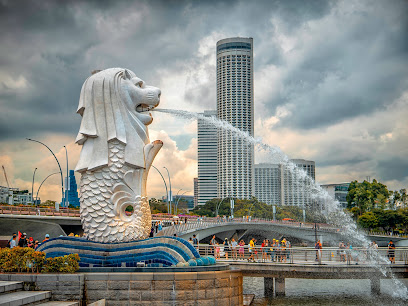
Clarke Quay
Clarke Quay: A historic riverside gem in Singapore, blending shopping, dining, and nightlife into an unforgettable experience.

Buddha Tooth Relic Temple
Explore the enchanting Buddha Tooth Relic Temple in Singapore's Chinatown, a serene haven of spirituality, art, and rich cultural heritage.
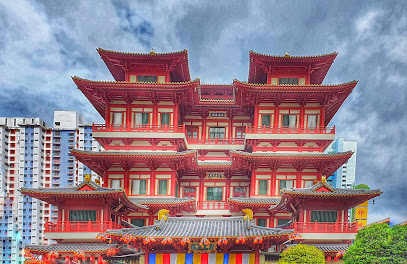
Chinatown Food Street
Experience the rich culinary heritage of Singapore at Chinatown Food Street, where diverse flavors and vibrant culture unite in a delightful food journey.
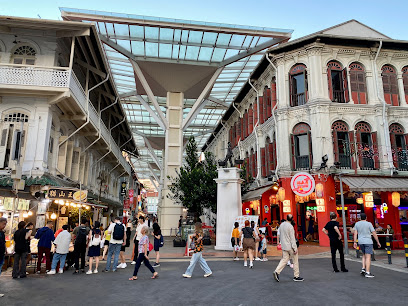
Helix Bridge
Discover the Helix Bridge, Singapore's architectural gem with stunning views, a unique design, and an unforgettable experience in the heart of the city.

Boat Quay
Experience the vibrant atmosphere and rich history of Boat Quay, a must-visit riverside destination in Singapore with dining and nightlife options.
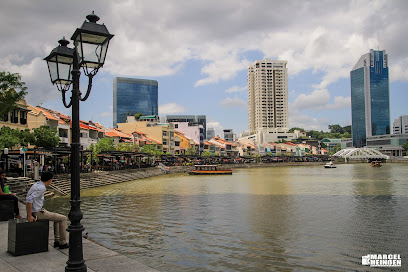
Chinatown Heritage Centre
Explore the vibrant heritage of Singapore at Chinatown Heritage Centre, where the stories of early Chinese immigrants come to life in an immersive ethnographic experience.
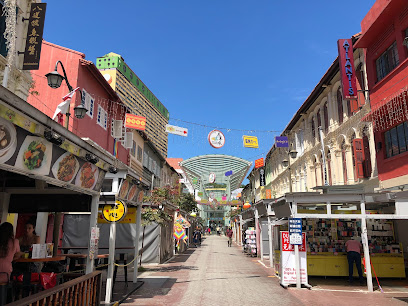
Chinatown Street Market
Explore the vibrant Chinatown Street Market in Singapore, where culture, cuisine, and commerce come together in a colorful tapestry of experiences.

Thian Hock Keng Temple
Discover the tranquil beauty of Thian Hock Keng Temple, a historic Taoist sanctuary in the heart of Singapore's vibrant Chinatown.
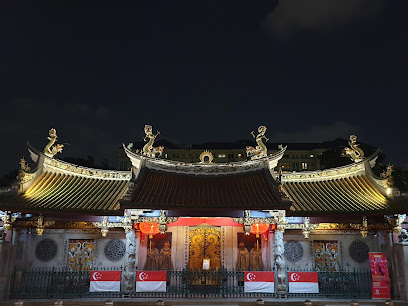
People's Park Centre
Explore the bustling People's Park Centre, a shopping haven in Singapore offering diverse retail options, authentic cuisine, and cultural experiences.
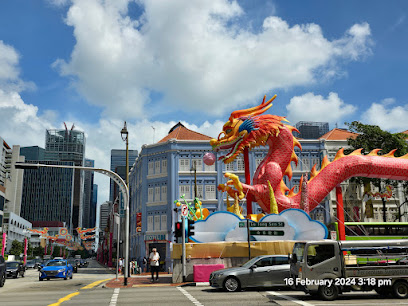
Former House of Tan Teng Niah
Explore the vibrant history and architecture of the Former House of Tan Teng Niah, a colorful gem in Little India, Singapore.

Chinatown Complex Market & Food Centre
Savor the best of Singaporean street food at Chinatown Complex Market & Food Centre, a must-visit culinary hotspot for every traveler.

Fort Canning Tree Tunnel
Explore the stunning Fort Canning Tree Tunnel, a serene park in Singapore, rich in history and natural beauty, perfect for leisurely strolls and photography.
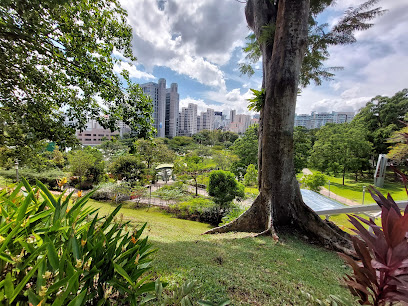
Cavenagh Bridge
Explore the historic Cavenagh Bridge, a stunning architectural gem that connects the vibrant districts of Singapore while offering breathtaking views and rich history.
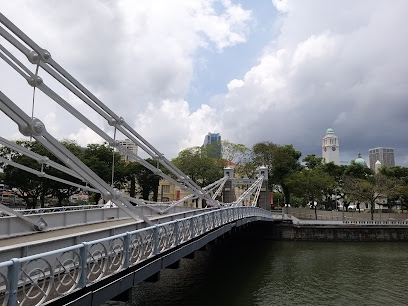
Jamae (Chulia) Mosque
Explore the cultural heart of Singapore at Jamae (Chulia) Mosque, a stunning historical site in vibrant Chinatown, rich in heritage and serenity.
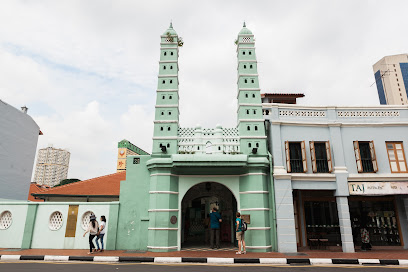
Unmissable attractions to see
Resorts World Sentosa
Explore Resorts World Sentosa: A vibrant destination in Singapore featuring an aquarium, casino, hotels, and thrilling attractions.

Jewel Changi Airport
Experience the magic of Jewel Changi Airport, where nature meets luxury shopping and world-class dining in an architectural marvel.
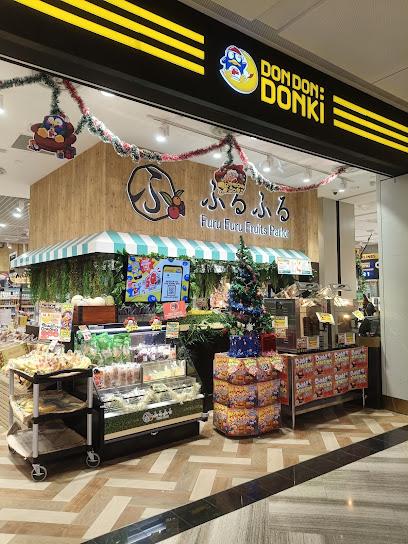
Merlion Park
Explore Merlion Park, a symbol of Singapore's heritage, showcasing the iconic Merlion statue and breathtaking views of the vibrant Marina Bay skyline.
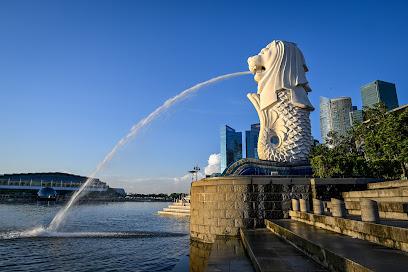
Singapore Changi Airport
Discover the unparalleled beauty and amenities of Singapore Changi Airport, where travel becomes a delightful experience full of surprises.

Marina Bay Sands Singapore
Discover the luxurious Marina Bay Sands Singapore, a premier hotel and attraction with stunning views, fine dining, and world-class entertainment.

Supertree Grove
Explore the Supertree Grove, a stunning fusion of nature and technology in Singapore's Gardens by the Bay, featuring breathtaking views and captivating light shows.
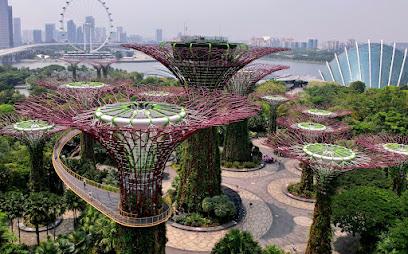
Clarke Quay
Experience the vibrant nightlife, diverse dining, and rich history at Clarke Quay, Singapore's iconic riverside destination.
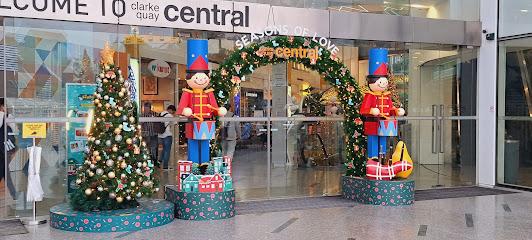
Clarke Quay
Experience the lively ambiance of Clarke Quay, Singapore's top riverside destination for dining, shopping, and nightlife.

East Coast Park
Experience the charm of East Coast Park, a scenic coastal haven in Singapore, perfect for leisure, adventure, and delicious seafood.

S.E.A. Aquarium
Explore the magnificent underwater world at S.E.A. Aquarium in Sentosa, Singapore, home to over 100,000 marine animals from diverse ecosystems.

Lau Pa Sat
Explore the culinary heart of Singapore at Lau Pa Sat, where diverse flavors and rich history come together in a vibrant hawker centre.
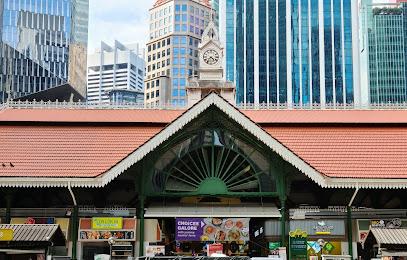
Cloud Forest
Experience the breathtaking beauty of Singapore's Cloud Forest, featuring stunning waterfalls and diverse plant life in a serene setting.
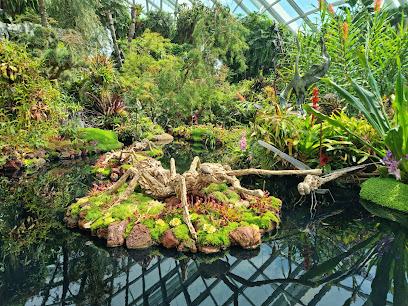
Flower Dome
Discover the mesmerizing Flower Dome at Gardens by the Bay, Singapore, showcasing a stunning array of global flora in an enchanting setting.
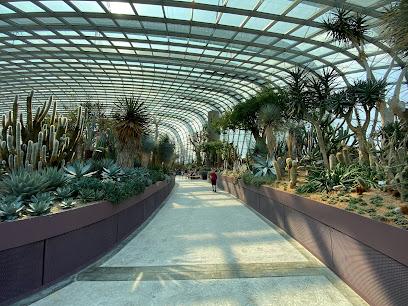
Singapore Flyer
Discover breathtaking views of Singapore from the iconic Singapore Flyer, one of the world's largest observation wheels, offering a unique perspective of the city.
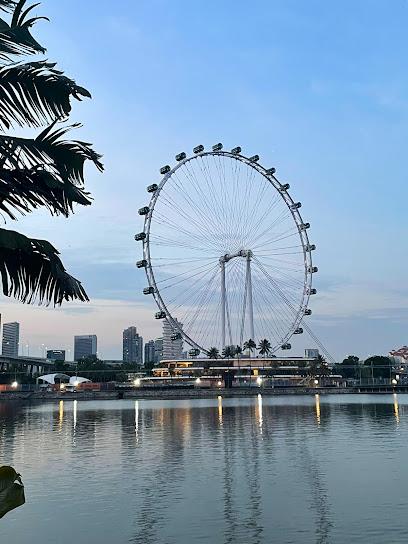
Esplanade - Theatres on the Bay, Singapore
Discover the heart of Singapore's arts scene at Esplanade – Theatres on the Bay, where creativity and culture come alive in spectacular performances.
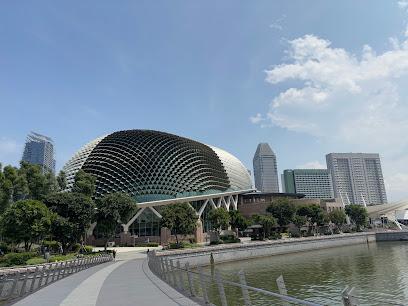
Essential places to dine
Chinatown Complex
Discover the vibrant flavors of Singapore at Chinatown Complex - a culinary paradise with diverse hawker stalls and rich cultural heritage.
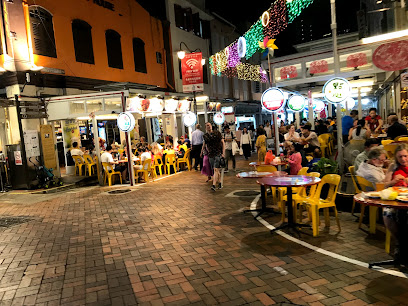
Potato Head Singapore
Discover Potato Head Singapore: A unique blend of grill delights and cocktail creativity set in a stunning heritage landmark.
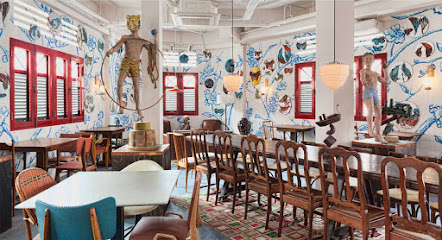
Oriental Chinese Restaurant 东方美食
Experience authentic Chinese cuisine in the heart of Singapore's Chinatown at Oriental Chinese Restaurant - where tradition meets taste.
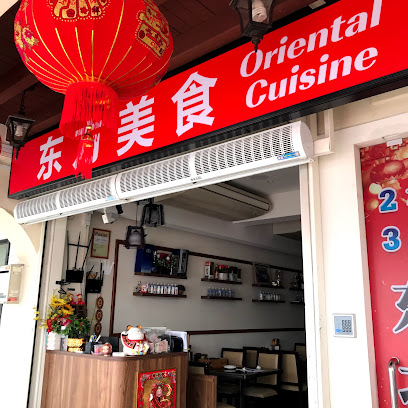
Yum Cha Chinatown
Discover authentic dim sum at Yum Cha Chinatown, where traditional flavors meet vibrant culture in the heart of Singapore's Chinatown.
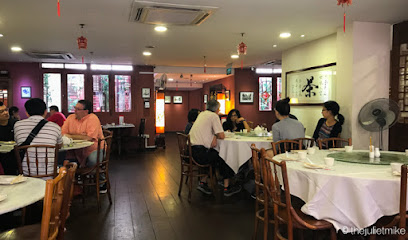
Spring Court Chinese Restaurant Singapore
Experience authentic Cantonese cuisine at Spring Court Chinese Restaurant in Singapore's vibrant Chinatown.
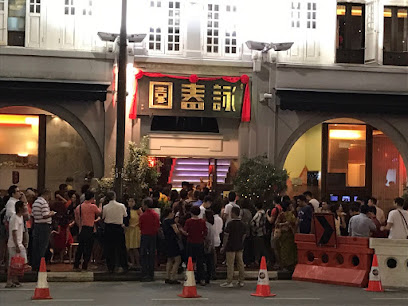
Xiang Xiang Hunan Cuisine 湘香湖南菜 @Chinatown
Discover the bold and spicy world of Hunan cuisine at Xiang Xiang Hunan Cuisine in Chinatown, Singapore - a true culinary delight.
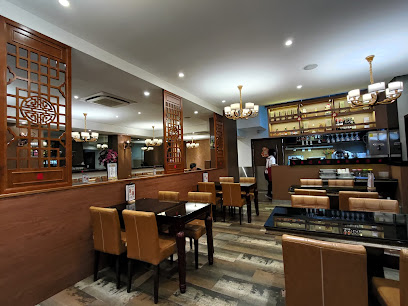
Chinatown Complex Market & Food Centre
Experience the vibrant flavors of Singapore at Chinatown Complex Market & Food Centre - a must-visit hawker center for food lovers.
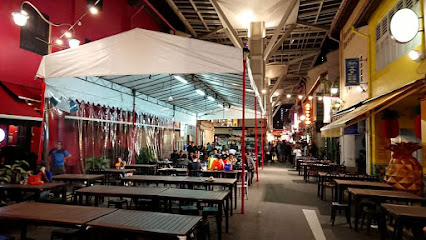
Birds of a Feather
Experience the authentic taste of Sichuan cuisine at Birds of a Feather in Chinatown - where tradition meets modern dining.
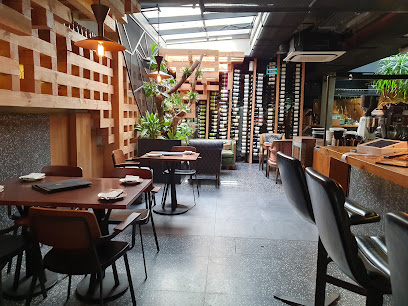
Utu
Experience authentic African cuisine at Kafe Utu, where vibrant flavors meet a welcoming atmosphere in Singapore's Chinatown.
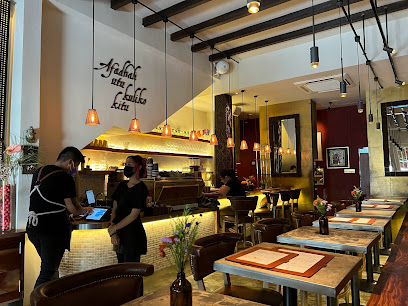
PS.Cafe Ann Siang Hill
Discover exquisite dining at PS.Cafe Ann Siang Hill in Singapore's Chinatown – where culinary art meets vibrant culture.

Tiong Shian Porridge
Experience authentic Singaporean comfort food at Tiong Shian Porridge in Chinatown – where tradition meets flavor.
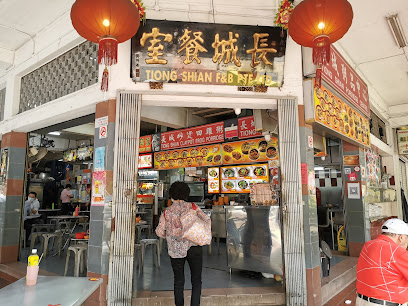
Tong Ah Eating House
Experience authentic Singaporean flavors at Tong Ah Eating House in Chinatown - where every dish tells a story.
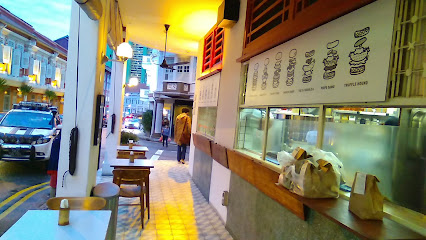
Chinatown Seafood Restaurant
Experience authentic Singaporean seafood delicacies at Chinatown Seafood Restaurant in the heart of vibrant Chinatown.
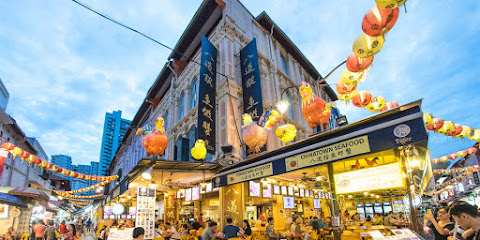
Les Bouchons @ Ann Siang
Experience authentic French bistro delights at Les Bouchons @ Ann Siang in Singapore's Chinatown – where culinary tradition meets vibrant atmosphere.
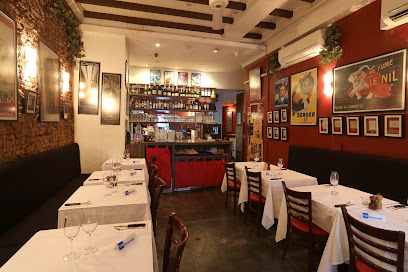
Nic & Tom Eatery - 少年食堂
Savor authentic Chinese dishes at Nic & Tom Eatery in Chinatown - where tradition meets modern dining in Singapore.
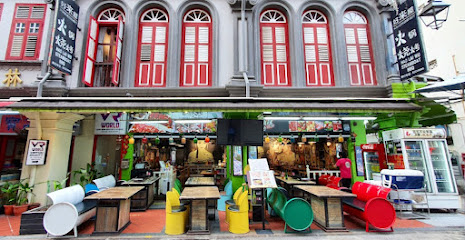
Markets, malls and hidden boutiques
Chinatown Point
Experience the heart of Chinatown at Chinatown Point, where shopping meets vibrant culture and delightful cuisine.

Chinatown Singapore
Explore the vibrant culture and heritage of Chinatown Singapore, a bustling market and tourist attraction filled with unique experiences.
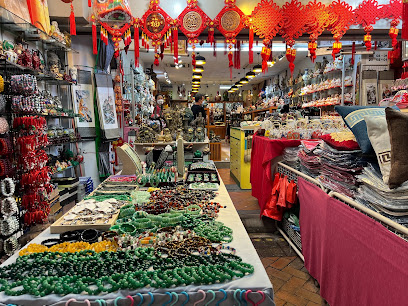
Chinatown Street Market
Explore the vibrant Chinatown Street Market in Singapore, where culture, shopping, and delicious street food come together for an unforgettable experience.
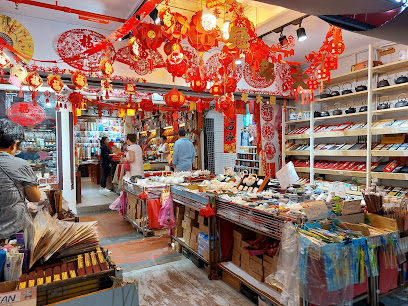
People's Park Centre
Explore eclectic shops and cultural treasures at People's Park Centre, a vibrant shopping hub in the heart of Singapore's Central Area.

Cross Street Exchange
Discover the vibrant shopping and dining experiences at Cross Street Exchange, Singapore's premier shopping mall in the Central Area.

Yue Hwa Chinese Products (Chinatown)
Explore Yue Hwa Chinese Products for an authentic shopping experience in the heart of Chinatown, Singapore, featuring traditional goods and Asian groceries.
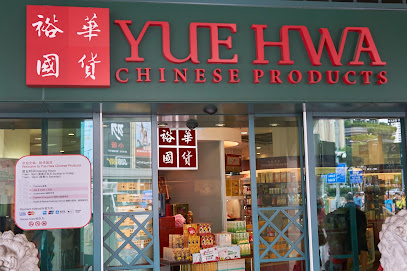
On Cheong Jewellery
Discover the timeless elegance of handcrafted jewelry at On Cheong Jewellery, a historical gem in Singapore's Chinatown.
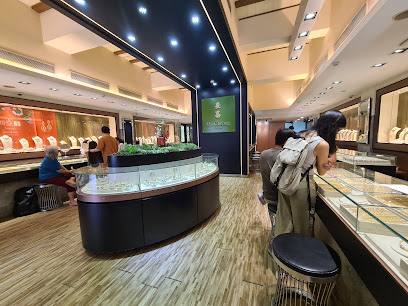
Littered with Books
Explore the enchanting Littered with Books in Chinatown, Singapore, where literary treasures await every reader.
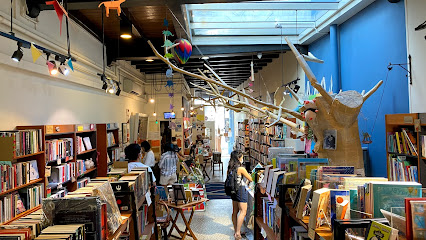
The Tintin Shop
Discover a treasure trove of Tintin collectibles, stationery, and unique gifts in the heart of Chinatown, Singapore.
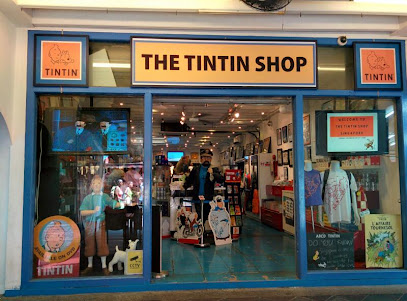
Lucky Chinatown
Explore the eclectic blend of shopping and dining at Lucky Chinatown, where tradition meets modernity in the heart of Singapore.
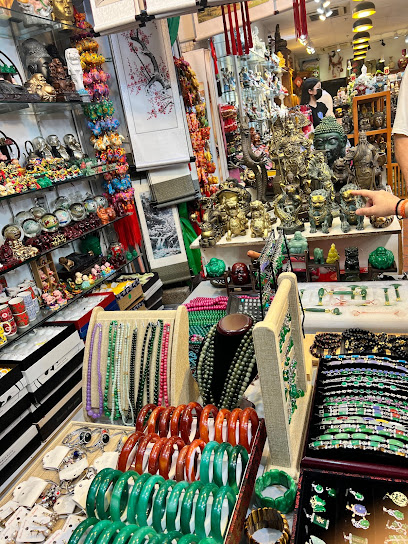
Orchid Chopsticks 65 Pagoda
Discover unique gifts and exquisite chopsticks at Orchid Chopsticks in Singapore's vibrant Chinatown, where culture and craftsmanship meet.
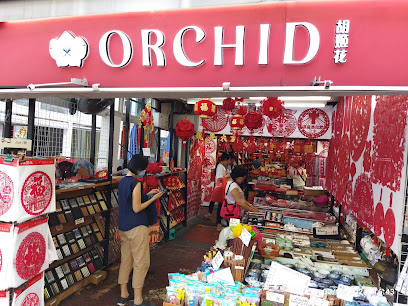
Love.PrettyPlus+ (Largest Plus Size Store in Singapore)
Explore Love.PrettyPlus+, Singapore's ultimate plus-size clothing haven in Chinatown, offering stylish apparel for every body shape and size.
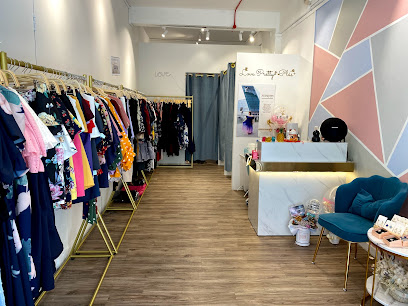
East Inspirations Shop
Explore East Inspirations Shop: A treasure trove of exquisite antiques in the heart of Singapore's Chinatown, perfect for collectors and cultural enthusiasts.

Peranakan Tiles Gallery (娘惹砖家)
Explore the vibrant heritage of the Peranakan culture through exquisite tiles at Peranakan Tiles Gallery in Singapore's Chinatown.
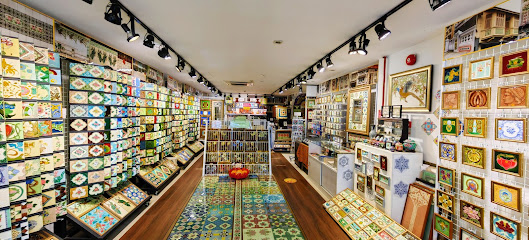
NearesTTen Curated Thrift Store
Explore NearesTTen Curated Thrift Store for unique vintage clothing and accessories in Singapore's vibrant Chinatown.
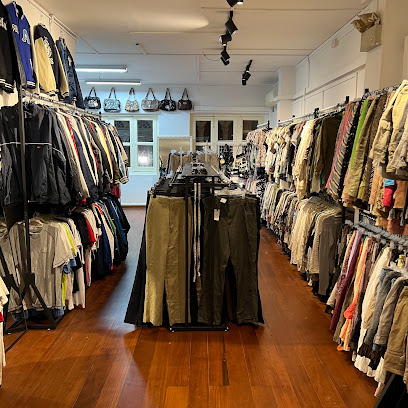
Essential bars & hidden hideouts
Potato Head Singapore
Discover the vibrant flavors of Potato Head Singapore, where gourmet burgers and creative cocktails meet in a historic Chinatown setting.

Tippling Club
Discover the innovative culinary and mixology artistry at Tippling Club in Singapore's vibrant Chinatown, a fine dining experience like no other.
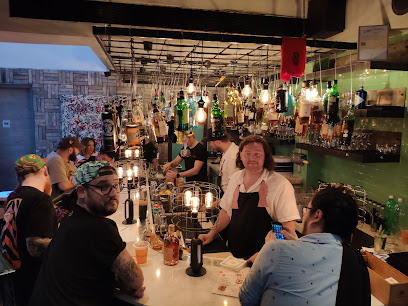
Bitters & Love
Discover the essence of mixology at Bitters & Love, Singapore's premier cocktail bar in the heart of Chinatown, offering innovative drinks and a vibrant atmosphere.
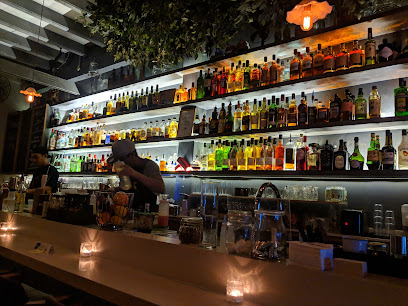
Gibson Bar
Discover the chic ambiance and innovative cocktails at Gibson Bar, a premier cocktail destination nestled in Singapore's vibrant Chinatown.
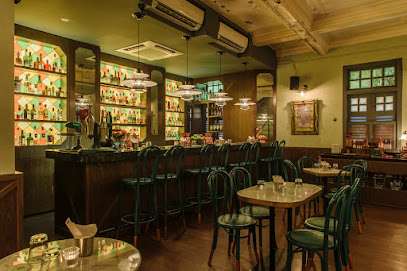
The Elephant Room Singapore
Discover The Elephant Room in Singapore, a cocktail bar blending tradition and innovation for an unforgettable drinking experience.
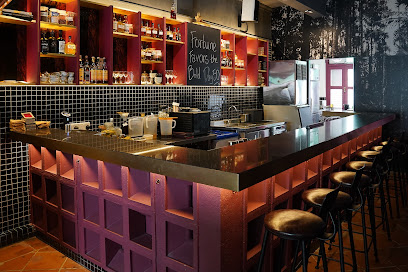
Dorothy's Bar
Explore the vibrant LGBTQ+ scene at Dorothy's Bar, a lively gay bar in the heart of Singapore's Chinatown with creative cocktails and friendly vibes.
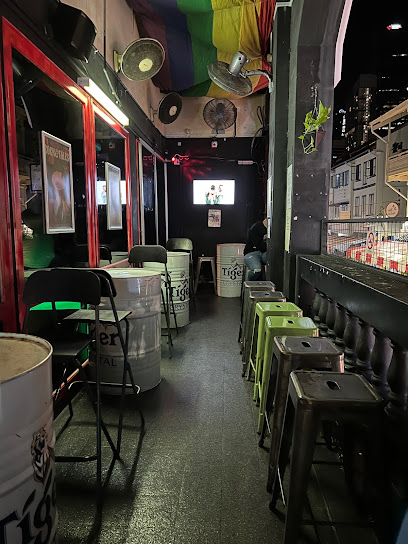
Junior The Pocket Bar
Explore the vibrant nightlife of Singapore at Junior The Pocket Bar, where innovative cocktails and delicious bites await every visitor.
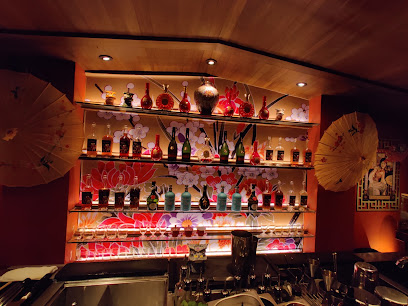
No Sleep Club
Discover No Sleep Club, a stylish bar in Singapore’s Chinatown, offering exquisite cocktails and premium coffee in an inviting atmosphere.
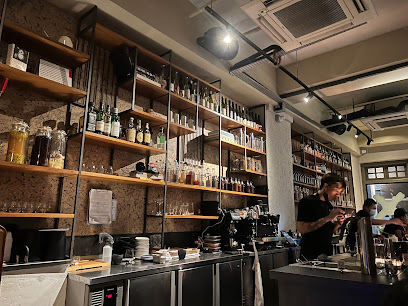
RPM by Dbespoke
Discover the unique charm of RPM by Dbespoke, a cocktail bar in Singapore specializing in exquisite Japanese shochu.
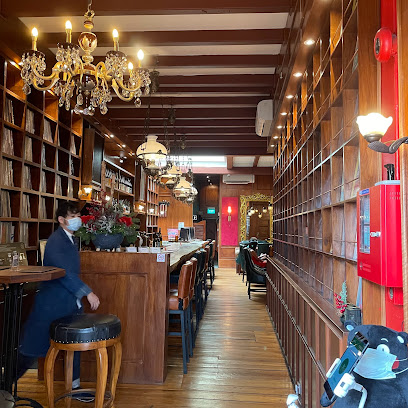
MOONSTONE Bar
Discover the vibrant nightlife at Moonstone Bar in Singapore's Chinatown, where exquisite cocktails meet a chic atmosphere for the perfect evening.
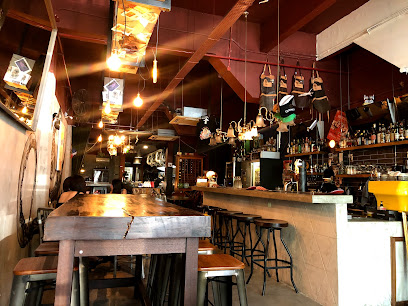
Low Tide
Experience the vibrant cocktail culture of Singapore at Low Tide, where creative drinks meet a lively atmosphere in the heart of Chinatown.
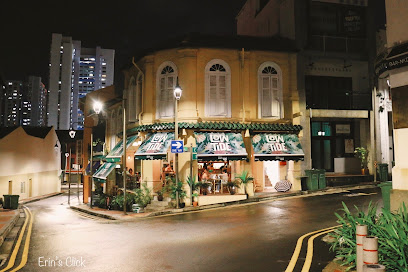
Jungle Ballroom
Experience the vibrant nightlife of Singapore at Jungle Ballroom, a cocktail bar offering innovative drinks in a tropical-inspired setting.
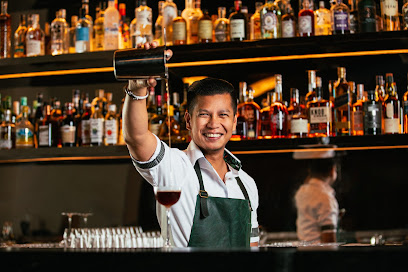
Night Hawk
Discover Night Hawk, Singapore's premier cocktail bar in Chinatown, offering unique drinks paired with delectable bites for an unforgettable night out.
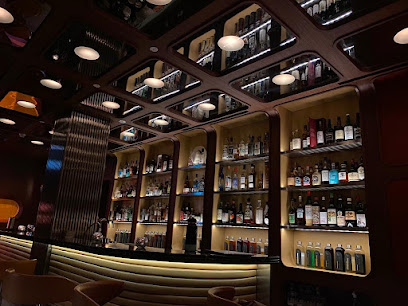
Bar NKD
Discover the vibrant cocktail scene at Bar NKD in Chinatown, Singapore, offering innovative drinks and a chic atmosphere for an unforgettable night out.
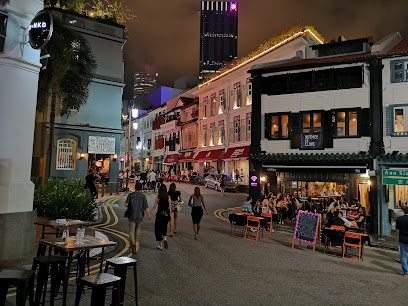
Tom, Dick & Hillary's
Experience the vibrant nightlife at Tom, Dick & Hillary's, a charming bistro-bar in Singapore's Chinatown, where delicious drinks meet delightful ambiance.
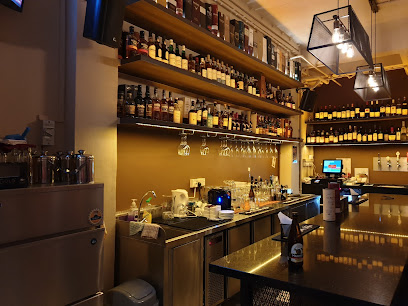
Local Phrases
-
- Hello你好
[Nǐ hǎo] - Goodbye再见
[Zàijiàn] - Yes是的
[Shì de] - No不
[Bù] - Please/You're welcome请
[Qǐng] - Thank you谢谢
[Xièxiè] - Excuse me/Sorry对不起
[Duìbùqǐ] - How are you?你好吗?
[Nǐ hǎo ma?] - Fine. And you?很好。你呢?
[Hěn hǎo. Nǐ ne?] - Do you speak English?你会说英语吗?
[Nǐ huì shuō yīngyǔ ma?] - I don't understand我不明白
[Wǒ bù míngbái]
- Hello你好
-
- I'd like to see the menu, please请给我看菜单
[Qǐng gěi wǒ kàn càidān] - I don't eat meat我不吃肉
[Wǒ bù chī ròu] - Cheers!干杯!
[Gānbēi!] - I would like to pay, please我要付款
[Wǒ yào fùkuǎn]
- I'd like to see the menu, please请给我看菜单
-
- Help!救命!
[Jiùmìng!] - Go away!走开!
[Zǒu kāi!] - Call the Police!报警!
[Bàojǐng!] - Call a doctor!叫医生!
[Jiào yīshēng!] - I'm lost我迷路了
[Wǒ mílù le] - I'm ill我生病了
[Wǒ shēngbìng le]
- Help!救命!
-
- I'd like to buy...我想买...
[Wǒ xiǎng mǎi...] - I'm just looking我只是看看
[Wǒ zhǐshì kànkan] - How much is it?多少钱?
[Duōshǎo qián?] - That's too expensive太贵了
[Tài guì le] - Can you lower the price?可以便宜点吗?
[Kěyǐ piányi diǎn ma?]
- I'd like to buy...我想买...
-
- What time is it?现在几点?
[Xiànzài jǐ diǎn?] - It's one o'clock现在一点
[Xiànzài yī diǎn] - Half past (10)十点半
[Shí diǎn bàn] - Morning早上
[Zǎoshang] - Afternoon下午
[Xiàwǔ] - Evening晚上
[Wǎnshang] - Yesterday昨天
[Zuótiān] - Today今天
[Jīntiān] - Tomorrow明天
[Míngtiān] - 1一
[Yī] - 2二
[Èr] - 3三
[Sān] - 4四
[Sì] - 5五
[Wǔ] - 6六
[Liù] - 7七
[Qī] - 8八
[Bā] - 9九
[Jiǔ] - 10十
[Shí]
- What time is it?现在几点?
-
- Where's a/the...?...在哪里?
[... Zài nǎlǐ?] - What's the address?地址是什么?
[Dìzhǐ shì shénme?] - Can you show me (on the map)?可以给我看地图吗?
[Kěyǐ gěi wǒ kàn dìtú ma?] - When's the next (bus)?下一班是几点?
[Xià yī bān shì jǐ diǎn?] - A ticket (to ....)一张票 (去....)
[Yī zhāng piào (qù....)]
- Where's a/the...?...在哪里?
History of Chinatown
-
Chinatown in Singapore was established in 1821 after the British founded Singapore as a trading port. The first Chinese junk arrived from Xiamen, Fujian Province, carrying some 150 immigrants. The area was designated as a Chinese enclave by Sir Stamford Raffles in his Town Plan for Singapore, which led to a significant influx of Chinese immigrants who contributed to the area's rapid development.
-
Chinatown has been a cultural hub for the Chinese community in Singapore, featuring traditional shophouses, temples, and clan associations. The area became a melting pot of various Chinese dialect groups, including the Hokkiens, Teochews, Cantonese, and Hakkas, each bringing their unique customs, festivals, and culinary traditions.
-
Chinatown is renowned for its well-preserved shophouses that showcase a blend of Baroque and Victorian styles mixed with traditional Chinese elements. These structures, built between the 1840s and 1960s, reflect the rich architectural heritage of the area and have been meticulously conserved to preserve their historical significance.
-
During the Japanese occupation of Singapore from 1942 to 1945, Chinatown was deeply affected. The area suffered from bombings and food shortages, and many residents faced harsh conditions. Despite these challenges, the resilient spirit of the community helped Chinatown recover and rebuild in the post-war years.
-
Opened in 1983, the Chinatown Complex is a key landmark that houses a wet market, food center, and retail shops. It serves as a central gathering place for locals and tourists alike, offering a wide array of traditional foods, fresh produce, and cultural items, thus preserving the vibrant atmosphere of Chinatown.
-
In 2002, the Chinatown Heritage Centre was established to provide an immersive experience into the lives of early Chinese immigrants. The center features recreated living quarters and exhibits that narrate the stories of hardship and perseverance, offering a deep understanding of Chinatown's historical and cultural evolution.
-
In recent decades, Chinatown has undergone significant revitalization efforts to balance modernization with historical preservation. Initiatives have included the restoration of heritage buildings, pedestrianization of streets, and the introduction of new cultural festivals and events, ensuring that Chinatown remains a vibrant and integral part of Singapore's urban landscape.
Chinatown Essentials
-
Chinatown in Singapore is conveniently located in the central part of the city. The nearest MRT station is Chinatown MRT Station, which is on the North East Line (NE4) and Downtown Line (DT19). Alternatively, Outram Park MRT Station (EW16/NE3) is also within walking distance. For those arriving by bus, multiple bus lines such as 61, 166, and 197 have stops in the vicinity.
-
Getting around Chinatown is easy due to its compact size. Most attractions are within walking distance of each other. For longer distances, the MRT and bus services are efficient and frequent. Taxis and ride-hailing services like Grab are also readily available. Cycling is becoming more popular, and there are bike-sharing options as well.
-
The official currency in Singapore is the Singapore Dollar (SGD). Credit cards are widely accepted in most restaurants, shops, and hotels in Chinatown. However, it is advisable to carry some cash for small purchases at street vendors and hawker centers. There are numerous ATMs available throughout Chinatown.
-
Singapore is known for its low crime rates, and Chinatown is generally a safe area for tourists. However, it's always wise to stay vigilant, especially in crowded markets and during festivals when pickpocketing can occur. Avoid isolated areas late at night and keep your belongings secure.
-
In case of an emergency, dial 999 for police assistance or 995 for medical emergencies. Major hospitals like Singapore General Hospital are nearby. Pharmacies are plentiful, and many offer 24-hour service. It is recommended to have travel insurance that covers medical emergencies.
-
Fashion: Do dress comfortably and modestly, especially if visiting temples. Avoid overly revealing clothing. Religion: Do respect local customs, such as removing your shoes before entering temples. Public Transport: Do stand on the left side of escalators to allow others to pass on the right. Don’t eat or drink on the MRT. Greetings: Do greet with a smile or a nod. A handshake is also acceptable. Eating & Drinking: Do try the local hawker food. Don’t leave food waste or trash behind; use the provided bins.
-
To experience Chinatown like a local, visit the Chinatown Complex Food Centre for authentic and affordable hawker food. Explore the side streets and alleys for hidden gems and traditional shops that sell Chinese herbs, antiques, and crafts. Attend local festivals like the Chinese New Year celebrations for a truly immersive experience.
Trending Landmark in Chinatown
-
Merlion
-
Clarke Quay
-
Buddha Tooth Relic Temple
-
Chinatown Food Street
-
Helix Bridge
-
Boat Quay
-
Chinatown Heritage Centre
-
Chinatown Street Market
-
Thian Hock Keng Temple
-
People's Park Centre
-
Former House of Tan Teng Niah
-
Chinatown Complex Market & Food Centre
-
Fort Canning Tree Tunnel
-
Cavenagh Bridge
-
Jamae (Chulia) Mosque
Nearby Cities to Chinatown
-
Things To Do in Clarke Quay
-
Things To Do in Bugis
-
Things To Do in Marina Bay
-
Things To Do in Little India
-
Things To Do in Orchard Road
-
Things To Do in Sentosa
-
Things To Do in Bukit Timah
-
Things To Do in East Coast Park
-
Things To Do in Singapore
-
Things To Do in Tampines
-
Things To Do in Yishun
-
Things To Do in Jurong
-
Things To Do in Sembawang
-
Things To Do in Johor Bahru
-
Things To Do in Malacca















